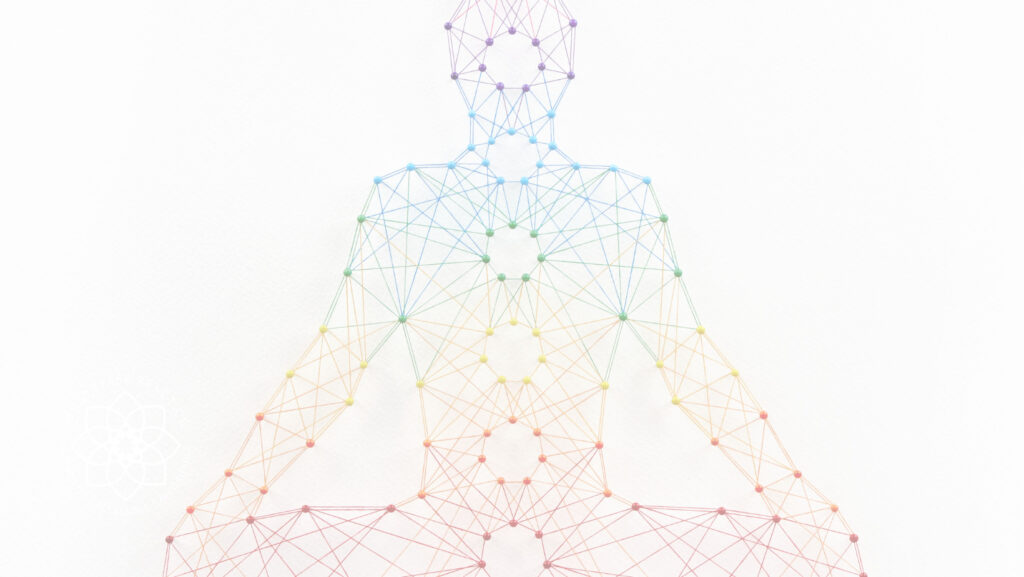g

The interconnection between body, mind, and spirit is noticeable during most yoga or mindfulness practices. Noticing alone is a form of subtle body awareness. It’s not quite tangible or visible to the eye but we understand these connections. Believing in energy fields, your intuition, or a higher power, are also types of subtle awareness. Let’s identify what the subtle body refers to. Most people understand that we have a physical body but it can be harder to grasp the idea of subtle bodies.
The panchamaya kosha system explains that every creature has five energetic bodies or koshas. Kosha means ‘to sheath’ and these sheaths move from the outermost and gross body to the innermost, subtle body. The physical body is referred to as Annamaya Kosha or the food body. It’s the outermost energetic body and the gross body. It’s tangible and visible to the eye. The food body is affected by anything we take in from the outside, foods, drinks, air, and light. This kosha can be nourished with mindful exercises such as asana (yoga poses), healthy nutrition, and living in a safe environment. Subtle body practices for the physical body include self-awareness and caring for the physical body as a basis for wellbeing. In regard to the chakras, or energy centers within the body, we know that each chakra is connected to particular parts of the body. A subtle body practice could include opening or clearing the chakras where we may feel physical discomfort.
One layer deeper is the breath body or Pranamaya Kosha. This sheath is still considered gross, but it’s not as subtle as the following koshas. We can still see the breath in cold climates and hear it when breathing heavily or with awareness. Some refer to the breath body as an energy body. We take in energy from the air we breathe but also from the people around us. That’s why it’s so important the energy we take in is good and clean energy. Prana refers to life force and without the breath, we can’t survive. Some people may have noticed how toxic relationships suck the life force right out of them. This was caused by bad prana or energy. In return, having healthy relationships nourish the pranamaya kosha. A subtle body practice for the breath body could include pranayama and breath work. Every sheath affects the other ones, so the food body affects the breath body and vice versa. Clearing chakras can assist to increase life force energy and therefore prana.
More subtle than the second kosha is the mind-body, or Manomaya Kosha, which is the third kosha. Our thoughts and emotions reside here. This sheath is not visible, nor can we hear it. However, our mind-body does still affect the other koshas. A subtle body practice for this sheath could include being mindful to reduce racing thoughts or negative mindsets. Practicing mindfulness can reduce rapid or shallow breathing triggered by a thought or emotion. The mind is connected to the breath and the physical body and vice versa. Such subtle body practices could include pratyahara, or the ability to withdraw the senses. During sleep, all kosha bodies naturally rest and we have naturally occurring pratyahara. Yoga Nidra, or yogic sleep, is another subtle body practice to nourish the manomaya kosha. Certain chakras such as the root chakra at the base of the spine correlate with fear and trust, therefore it’s helpful to clear those affecting the mind.
The fourth sheath, or Vijnanamaya kosha, is known as the intuition or wisdom body. This is one of the most subtle bodies residing deep within every being. Surely we can relate to having a gut feeling about some past experience. This gut feeling was your intuition, or intellect, sending signals to your brain (manomaya kosha) and causing a physical reaction in the annamaya kosha. Maybe you recall a problematic situation making you sick to your stomach. The gut feeling and the gut are intimately related, one affects the other. Decisions are made based on the fourth sheath. A subtle body practice for this kosha could include concentration (Dharana) or meditation (Dhyana). Practicing candle gazing or Trataka would entail concentration and introduce meditation. Another subtle body practice might involve differentiating between truth and perception. Negative thoughts and judgments naturally dissolve with such subtle body practices. The third eye chakra is associated with the body of intuition. However, because of the mind/gut connection, we also think that practices clearing the solar plexus can nourish this subtle body.
Anandamaya Kosha, or the bliss body is the most subtle of all 5 energy bodies. Some refer to this as understanding the divinity within all of us, our soul, and truth. Once we recognize this innermost subtle body, the connection to every being around us will come to light. Subtle body practices to nourish the Self, the divine, or the bliss body include selfless service, devotion, and faith. Regular meditation can help people reach a blissful state called Samadhi, the 8th limb in Ashtanga Yoga. This bliss state may assist in recognizing the union (yoga) between the Self and the divine. Enlightenment may be experienced in this limb, such an experience is birthed out of the most subtle body. Focusing on the crown chakra, the most subtle chakra will nourish this energetic body. The interconnection between the chakras and koshas calls for subtle body practices nourishing all energetic bodies and centers. Practicing the 8 limbs of yoga and mindfulness are excellent tools to connect within the subtle body.
